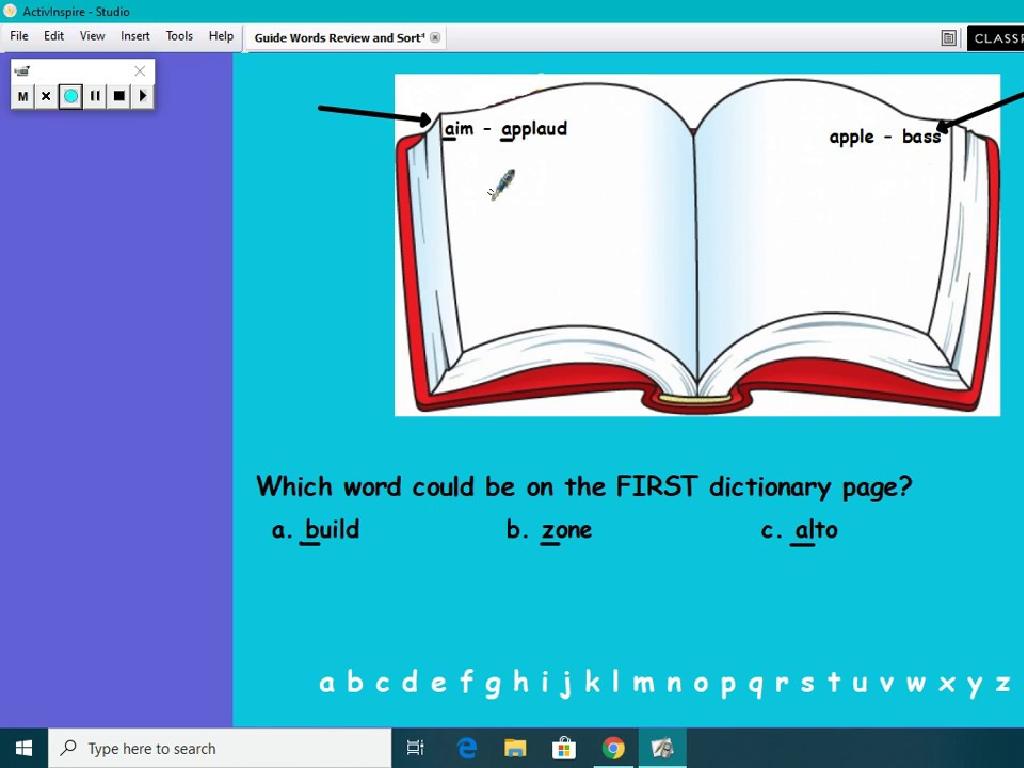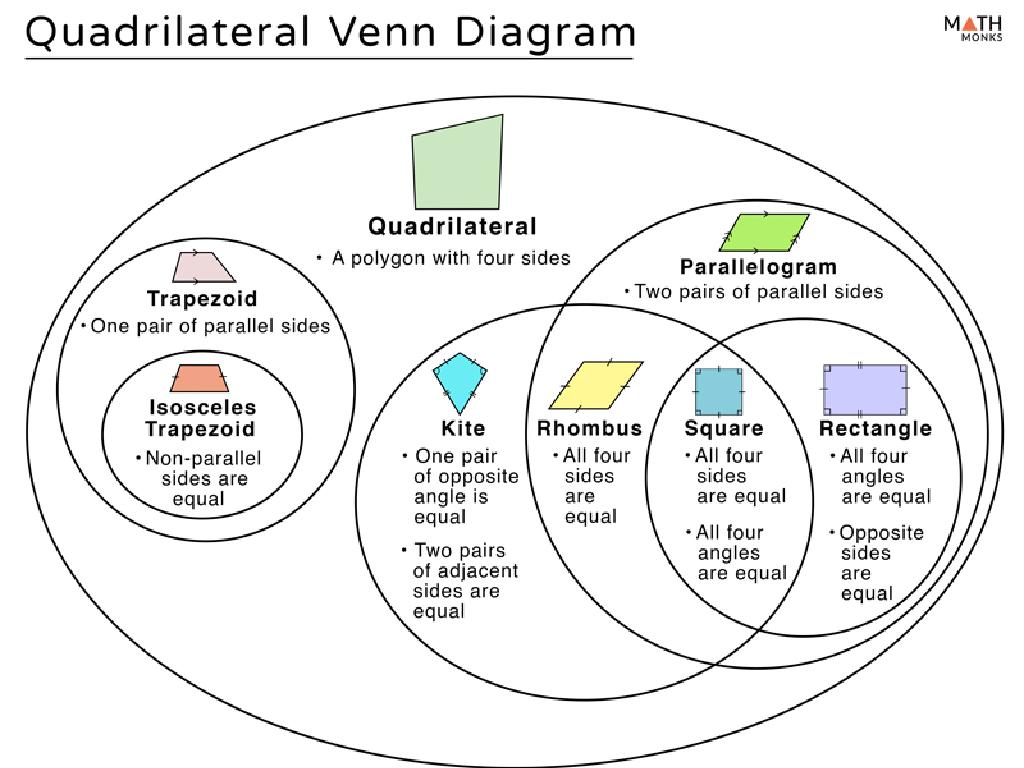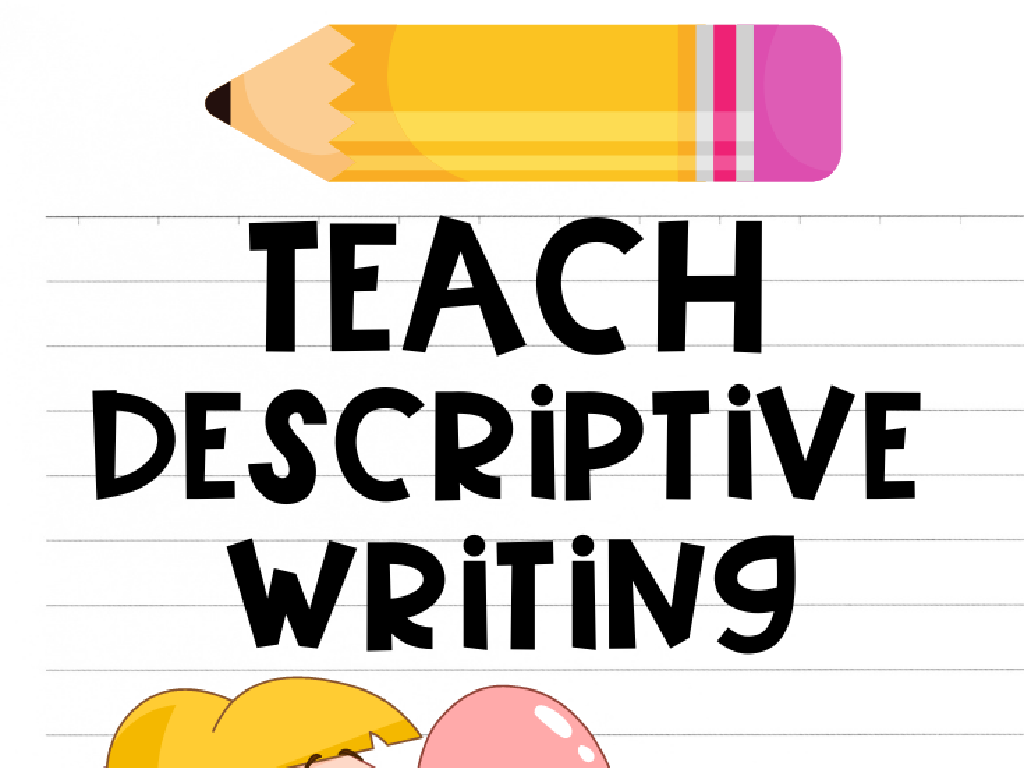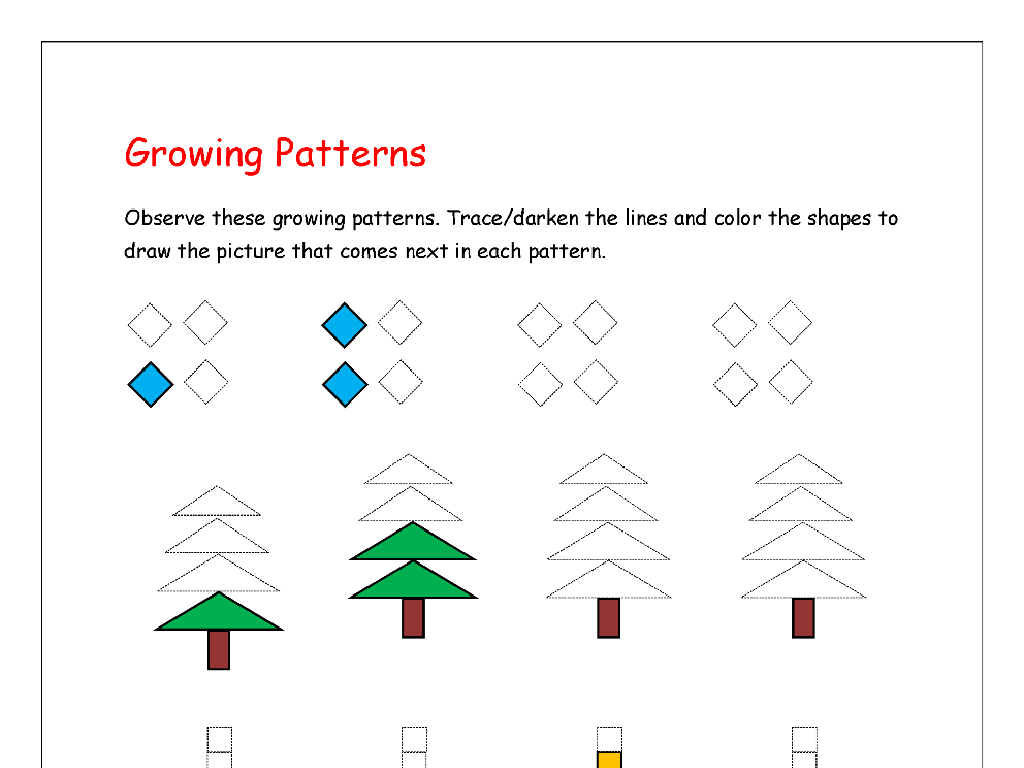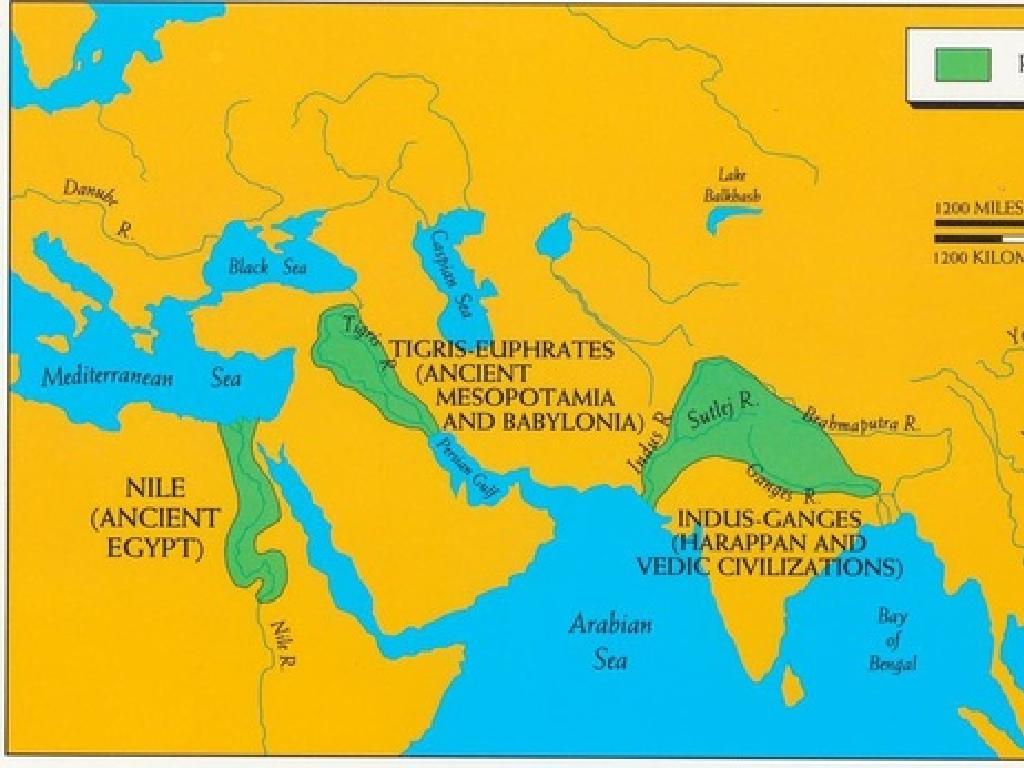Guess The Number
Subject: Math
Grade: Second grade
Topic: Place Value
Please LOG IN to download the presentation. Access is available to registered users only.
View More Content
Welcome to Place Value!
– Greet our young mathematicians
– Introduce the guessing game
– We’ll guess numbers based on clues
– Learn about each number’s place
– Ones, tens, and hundreds places
– Guessing game rules
– Listen to the clues carefully and think about the place value
|
This slide is designed to introduce second-grade students to the concept of place value in a fun and engaging way. Start by greeting the students warmly to create an inviting atmosphere. Explain that they will be playing a guessing game that will help them understand the value of each digit in a number depending on its place. Clarify the places such as ones, tens, and hundreds, and provide examples. Set clear rules for the guessing game, ensuring that the clues given are related to the place values of the numbers. Encourage participation and praise their efforts to foster a positive learning environment.
Understanding Place Value
– Place value in numbers
– The position of each digit in a number determines its value.
– Each spot’s value increases tenfold
– Moving left, each place is 10 times the value of the one to its right.
– Right to left value growth
– Practice with examples
– Example: In 53, the 5 is in the ‘tens’ place, worth 50.
|
This slide introduces the concept of place value, which is fundamental in understanding how numbers are structured and how to read them. Emphasize that as we move from right to left in a number, each position represents a value ten times greater than the position to its right. This is why the number 10 is so important in our number system. Use simple two-digit numbers as examples to illustrate this point, and encourage students to practice by identifying the place value of digits in various numbers. This will help them grasp the concept of place value and its role in mathematics.
Building Numbers with Blocks
– Use blocks to build numbers
– Blocks can represent units like 1s, 10s, 100s
– Each block is a place value
– A single block can be 1, a row of 10 blocks is 10
– Understand ones, tens, hundreds
– Blocks stacked together show place value visually
– Practice creating different numbers
|
This slide introduces the concept of building numbers using objects, specifically blocks, to represent different place values. It’s a hands-on activity that helps students visualize and understand the concept of ones, tens, and hundreds. Each block represents a single unit, and students can combine these to form larger numbers. For example, 10 single blocks can be grouped to represent the ‘tens’ place, and 10 ‘tens’ blocks can be grouped to represent the ‘hundreds’ place. Encourage students to practice with different combinations of blocks to build a variety of numbers and reinforce their understanding of place value. This activity lays the foundation for more complex mathematical concepts and operations involving numbers.
Understanding Place Value: Ones, Tens, and Hundreds
– Ones represent single units
– Tens are bundles of ten ones
– Like 10 ones make a ‘ten’
– Hundreds are ten groups of tens
– Like 10 tens make a ‘hundred’
– Place value builds number sense
|
This slide introduces the concept of place value, which is fundamental in understanding the structure of numbers in math. Start by explaining that ones are the building blocks of numbers, representing a single unit. Then, show that tens are a collection of ten ones bundled together, which simplifies counting and number representation. Similarly, hundreds are a larger bundle, consisting of ten tens. Emphasize that understanding place value helps in grasping the size of numbers and is crucial for operations like addition, subtraction, and beyond. Use visual aids like blocks or counters to demonstrate grouping in tens and hundreds. Encourage students to practice by grouping items or drawing representations of ones, tens, and hundreds.
Let’s Practice: Guess the Number with Blocks
– Observe the block arrangement
– Count the hundreds place blocks
– Blocks stacked in groups of 100
– Count the tens place blocks
– Rods representing groups of 10
– Count the ones place blocks
– Single blocks for ones
|
This slide is designed for a class activity where students will practice their understanding of place value by guessing numbers based on block representations. Provide students with images or physical blocks arranged to represent a number. Guide them to first identify and count the number of ‘hundreds’ blocks, then ‘tens’ rods, and finally the ‘ones’ blocks. Encourage them to add up the places to find the total number the blocks represent. This hands-on activity will help reinforce their comprehension of place value in a fun and interactive way. Prepare to assist students who may struggle with the concept and ensure that they understand each step of the process.
Guess the Number Game
– Understand place values
– Hundreds, tens, and ones make up numbers
– Listen to the clues carefully
– Clues will hint at each place value
– Use clues to guess the number
– Think about what each clue tells you
– Enjoy the game and learn
|
This slide introduces the ‘Guess the Number’ game, which is designed to help second-grade students understand and apply their knowledge of place values in a fun and interactive way. The game involves the teacher thinking of a number and providing clues related to the hundreds, tens, and ones places. Students use these clues to deduce the number. It’s a great way to reinforce the concept of place value and to encourage critical thinking. As a teacher, prepare a list of numbers and corresponding clues that guide students towards the correct number. Make sure the clues are clear and appropriate for the second-grade level. During the game, encourage participation and provide guidance as needed. Celebrate correct guesses and provide positive feedback throughout the activity.
Guess the Number with Place Value
– The mystery number has 4 tens
– Remember, 4 tens is the same as 40
– Think about what the number could be
– Write down your guess
– Share your guess with the class
|
This slide is designed to help students understand the concept of tens in the place value system. Start by explaining that each ‘ten’ is a group of ten ones. Then, guide them to realize that 4 tens are the same as 40. Encourage the students to write down their guess of what the number could be, considering it has 4 tens. After they have written down their guesses, ask them to share with the class. This will help them to understand and reinforce the concept of place value. For the activity, you can have different numbers with various tens and ones for the students to guess, making it interactive and fun.
Guess the Number: Clue #2
– Our number has 3 hundreds
– That’s like 300
– Think about what the number could be
– Write down your guess
– Use your place value knowledge
– Share your guess with the class
– Are you ready to explain why you guessed that number?
|
This slide presents the second clue in a ‘Guess the Number’ activity focused on understanding place value. The clue indicates that the mystery number contains ‘3 hundreds,’ which equates to 300. Encourage students to use their knowledge of place value to determine what the entire number could be, considering the hundreds place is filled with a 3. Have them write down their guesses and prepare to share with the class. This activity will help reinforce the concept of place value and give students practice in verbalizing their mathematical thought process. As a teacher, be prepared to guide students who may struggle and provide additional examples if necessary.
Guess the Number: Clue #3
– The number has 5 ones
– Think about place value
– Ones are in the rightmost place
– Can you guess the number?
– Share your answer with the class
– Is it 5? Or maybe 15, 25…?
|
This slide presents the third clue in a ‘Guess the Number’ activity, focusing on the concept of place value, specifically the ones place. The clue indicates that the mystery number contains 5 ones. Encourage students to think about what this means in terms of place value. Remind them that the ones place is the rightmost digit in a number. Ask them to consider numbers that have 5 in the ones place and to be ready to share their guesses with the class. This activity helps reinforce their understanding of place value and encourages critical thinking as they deduce possible numbers. It’s also a fun way to engage the whole class in a discussion about their thought process and reasoning.
Reveal the Mystery Number!
– Mystery number revealed: 345
– Clue 1: It’s between 300 and 400
– It’s in the hundreds, but not yet 400
– Clue 2: The last digit is 5
– The number ends in 5, like 305, 315…
– Clue 3: The middle digit is 4
– 4 is sandwiched right in the middle
|
This slide is designed to help students understand the concept of place value in a fun and engaging way. By revealing the mystery number 345, we can backtrack and discuss the clues that lead to this answer. Clue 1 helps students understand the concept of hundreds and the range they cover. Clue 2 focuses on the ones place and its significance. Clue 3 emphasizes the tens place. This exercise not only reinforces the understanding of place value but also encourages logical reasoning as students piece together the clues to guess the number. For an interactive class activity, consider having students come up with their own mystery numbers and clues for their classmates to solve.
Your Turn: Create a Mystery Number!
– Think of a secret number
– Give clues based on place value
– Clues like ‘The tens digit is 3’ or ‘It’s greater than 50 but less than 60’
– Your partner guesses the number
– Take turns and have fun!
|
This slide initiates an interactive activity where students will apply their understanding of place value to create and solve number mysteries. Encourage students to think of a number within a range appropriate for their level. They should give clues to their partner about the number’s place value, such as the value of the tens and ones digits, or whether the number is odd or even. Remind them to use terms they’ve learned in class. This activity will help reinforce their comprehension of place value in a fun, engaging way. Possible variations of the activity could include using larger numbers, incorporating hundreds place, or making it a competition to see who can guess the number with the fewest clues.
Class Activity: Build and Guess!
– Pair up with a classmate
– Build a number using base-ten blocks
– Use ones, tens, and hundreds blocks
– Guess your partner’s number
– Look at the blocks and say what number you think it is
– Take turns and enjoy the game!
|
This interactive class activity is designed to help second-grade students understand place value in a fun and engaging way. By using base-ten blocks, students will visually and physically build numbers, which reinforces their understanding of ones, tens, and hundreds. Encourage students to communicate and collaborate with their partners to make guesses based on the blocks’ arrangement. As a teacher, you can walk around the classroom to assist and ensure that each student gets a chance to build and guess. Possible variations of the activity could include using a timer to make it a timed challenge, having students write down their guesses before revealing the answer, or introducing ‘mystery numbers’ where students give clues based on the place value of the blocks used.

